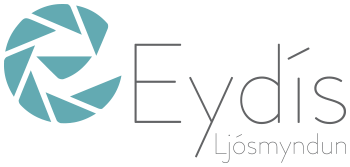Cost of Property, Plant and Equipment IAS 16
The regulations mention examples of HVAC system components, including compressors, furnaces, chillers, ducts, diffusers, air handlers, and cooling towers. Some of these are considered major components of the HVAC system because they perform a discrete and critical function in the overall HVAC system. Get instant access to lessons taught by experienced private equity pros and bulge bracket investment bankers including financial statement modeling, DCF, M&A, LBO, Comps and Excel Modeling. Such costs do not render financial advantages in subsequent periods, hence they are promptly recognized.
- These doubts arise especially when your company constructs a big asset, such as a plant or a mine.
- In this article, we’ll outline some things a business will need to consider when acquiring or implementing new software for its own use and how to account for those transactions.
- Each company has its dollar value threshold for what it considers an expense rather than a capitalizable cost.
- Lean on their expertise, and make sure you’re doing what makes sense for your business.
Conversely, expending a cost decreases net income on the income statement in the period when the cost was incurred. Upgrades or improvements to the asset that extend its useful life https://kelleysbookkeeping.com/ or increase its utility are other common examples. This process of delaying the full recognition of the expense has far-reaching effects on a company’s financial statements.
2 Accounting for capital projects
They might record a $500 credit to increase their payables account, then a $500 debit to increase a general ledger account that’s dedicated to equipment expenses. As a result, their books balance, and their P&L will show $500 less profit. Notice that in year four, the remaining book value of $12,528 was not multiplied by 40 percent. Since the asset has been depreciated to its salvage value at the end of year four, no depreciation can be taken in year five. Companies are allowed to capitalize on development costs for new software applications if they achieve technological feasibility. Technological feasibility is attained after all necessary planning, coding, designing, and testing are complete, and the software application satisfies its design specifications.
- Fixed assets—also known as tangible assets or property, plant, and equipment (PP&E)—is an accounting term for assets and property that cannot be easily converted into cash.
- Liam would continue to depreciate the asset until the book value and the estimated salvage value are the same (in this case, $10,000).
- Depreciation records an expense for the value of an asset consumed and removes that portion of the asset from the balance sheet.
These capitalized costs are not immediately recognized as expenses but are gradually written off or depreciated over the useful life of the assets. Capitalized costs represent significant investments in assets such as property, plant, and equipment, which provide economic benefits over multiple accounting periods. The mechanics of capitalizing costs allow businesses https://bookkeeping-reviews.com/ to more accurately match revenues with the expenses incurred to generate those revenues, following the generally accepted accounting principles (GAAP). At its core, a capitalized cost signifies an expenditure that is appended to the cost value of a tangible asset on an organization’s balance sheet rather than being promptly charged during the time it was incurred.
AccountingTools
Once an organization determines that they should capitalize the cost, management needs to determine how it will depreciate or amortize that cost. A business will need to reduce the net book value of an asset on its financial statements by depreciating or amortizing that cost over the asset’s estimated useful life because the business uses the asset in its operations. The depreciation of capitalized costs also significantly affects the income statement and balance sheet over the asset’s operational lifespan. This is done so that the statement of cash flows, which starts with net income and then adjusts for non-cash items, can be used to assess the real cash created or used in operations. Not to mention, capitalized costs and depreciation have tax implications. For accounting purposes, assets are categorized as current versus long term and tangible versus intangible.
4 When Should a Company Capitalize or Expense an Item?
The expense will still show up on financial statements — just gradually. The way this is done is called depreciation for more concrete (“tangible”) assets or amortization for more abstract (“intangible”) assets. These methods systematically move a portion of its dollar value from assets to expenses over its expected useful, or, depreciable life. Each year, the accumulated depreciation balance increases by $9,600, and the machine’s book value decreases by the same $9,600.
What is a Capitalized Cost?
Any asset that is expected to be used by the business for more than one year is considered a long-term asset. These assets are not intended for resale and are anticipated to help generate revenue for the business in the future. Some common long-term assets are computers and other office machines, buildings, vehicles, software, computer code, and copyrights.
IAS 16.25 clarifies when an exchange transaction has commercial substance. Generally, a commercial substance ‘test’ compares the cash flows of the exchanged assets or the affected entity’s operations before and after the asset exchange. IAS 16 explains that detailed calculations may not be necessary if the result of these analyses is clear.
When to Capitalize Costs During Construction
For a four-year asset, multiply 25 percent (100%/4-year life)×2(100%/4-year life)×2, or 50 percent. For a five-year asset, multiply 20 percent (100%/5-year https://quick-bookkeeping.net/ life)×2(100%/5-year life)×2, or 40 percent. Capitalized costs consist of the fees that are paid to third parties to purchase and/or develop software.
